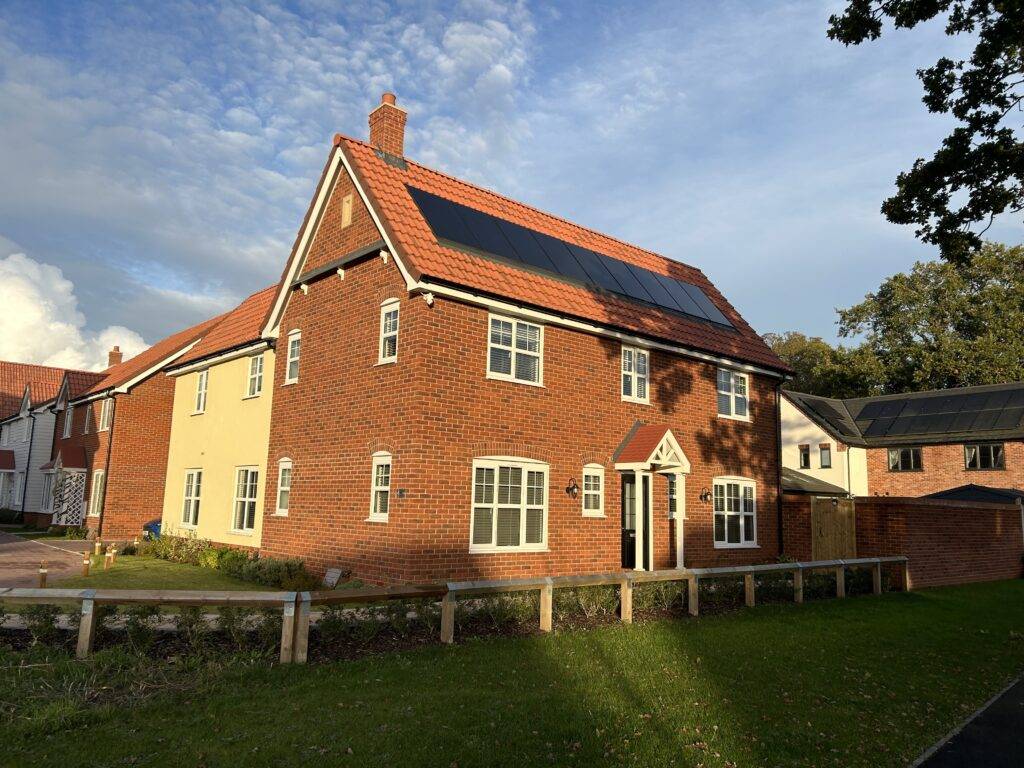Discover the Future Savings of Solar Power for Norfolk & Suffolk Homes

The cost of living crisis has significantly impacted households across the UK. With energy bills rising, many homeowners are seeking sustainable and cost-effective alternatives to traditional energy sources. Solar power has emerged as a viable option, offering substantial savings over the next few years.
How is the cost of solar energy calculated?
A common concern about solar panels is the initial cost. However, the price of solar power has decreased significantly in recent years, making it more accessible. The cost per watt, which represents the price paid for each watt of solar panel capacity, has been declining due to technological advancements and economies of scale. This has made solar power increasingly affordable.
Additionally, the payback period for solar panels, which is the time it takes for savings to offset the initial investment, has shortened. With decreasing installation costs and rising electricity prices, homeowners can recoup their investment more quickly.
What government incentives can you get for solar energy?
While the UK government has introduced incentives to encourage renewable energy adoption, the landscape has evolved. The Renewable Heat Incentive (RHI) and Feed-in Tariff (FIT) are no longer open to new applicants. However, as the UK aims to achieve its net-zero carbon emissions target, support for solar power is likely to grow, potentially leading to new incentives and subsidies.
Are Norfolk and Suffolk good locations for solar panels?
Norfolk and Suffolk, with their coastal locations and varying weather conditions, present a unique energy landscape. The region enjoys a reasonable amount of sunlight, and understanding local energy consumption patterns is essential for maximizing the benefits of solar power. With many flat areas such as the Norfolk Broads and to the opposite side of the county; the Fens also has an abundance of low, flat land which is perfect for both wind energy as well as solar farms. The geographical benefits also extend to homeowners in Norfolk and surrounding areas. Much of the landscape is un-obstructed by steep hills, meaning solar panels are exposed to the full power of the sun.
Are more people installing solar panels?
The appeal of solar power is evident in the UK’s rapidly increasing adoption rate. Over 1.39 million households now harness the sun’s energy, representing 4.9% of the nation’s 28.4 million households. Importantly, this figure only includes installations certified by the Microgeneration Certification Scheme (MCS), suggesting the actual number of solar homes is even higher.
While the first UK household to embrace solar panels, the Oxford Ecohome, made the leap in 1995, widespread adoption remained slow for the next 15 years. However, since the government began recording installation numbers in 2010, with a modest 23,757 households going solar that year, the subsequent years have witnessed an explosion in solar demand across the UK.
What are the costs involved with solar panels?
For those concerned about the upfront cost of solar panel installation, several financing options are available. Many reputable solar panel installers, like ourselves, will offer financing options for the purchase of solar panels and the associated costs.
- Loans: These offer traditional borrowing terms but are specifically for solar installations. Interest rates and repayment periods can vary.
- Solar panel leases: A third-party company installs and maintains the panels, with homeowners paying a fixed monthly fee for the electricity generated.
- Power Purchase Agreements (PPAs): A solar company installs the panels and sells the generated electricity to the homeowner at a predetermined rate.
Comparing different financing options is crucial to find the one that best suits your financial situation and long-term goals.
How much can you save by having solar panels then?
To illustrate the potential savings, consider two hypothetical homeowners in Norfolk and Suffolk:
Data supplied by – https://www.sunsave.energy/
- The Average Family Home: A typical three-bedroom house can benefit significantly from a 4kW solar panel system. With declining costs and increasing energy prices, the payback period is likely shorter than ever before – could save up to £19,874 over 20 years based on current pricing.
- The Energy-Efficient Home: Homes already equipped with energy-saving measures can further enhance cost savings and environmental impact with solar panels – could save up to £22,750 over 20 years based on current pricing.
What do the solar experts say?
“The solar industry’s growth is remarkable, driven by technological advancements and increasing consumer demand. Homeowners in Norfolk and Suffolk are well-positioned to benefit from the falling cost of solar power and reap the rewards of clean, affordable energy,” says Simon Palmer (Director, Wise Green Energy).
What should I consider before investing in solar panels?
Investing in solar power is a significant decision, but the evidence suggests it’s a financially sound choice for many Norfolk and Suffolk homeowners. By understanding the cost per watt, solar panel payback period, and available financing options, you can make an informed decision that benefits both your wallet and the planet.
As technology continues to evolve and government policies support renewable energy, the future of solar power looks increasingly bright. Now is the time to harness the sun’s energy and enjoy the long-term savings it offers.
Do you get energy from solar panels all year round?
Like any energy source, energy consumption patterns fluctuates across the year; generally, there is higher usage expected in the autumn and winter months when conversely there is also less sunlight.
– Seasonal Variations: Both counties experience peak energy consumption during winter months due to increased heating demands. This aligns well with reduced solar output during this period. However, summer months also see significant energy usage, particularly for cooling and appliances.
– Rural vs. Urban: While both Norfolk & Suffolk have a mix of rural and urban areas, energy consumption patterns can vary. Urban areas tend to have higher electricity consumption due to a larger population and more energy-intensive lifestyles.
Are there Local Incentives and Support available for solar?
Local authorities in Norfolk and Suffolk have implemented initiatives to encourage solar power adoption. While the national FIT scheme is closed to new applicants, it’s essential to check for any local or community-led FIT alternatives.
Where can I find information about Government Support and Incentives?
The UK government website, GOV.UK, provides valuable information on energy-saving measures, including:
– Green Deal: While the Green Deal finance scheme itself is no longer available, the website offers details about energy-saving home improvements, which can complement solar panel installation.
– Smart Export Guarantee (SEG): This scheme allows you to receive payments from your energy supplier for the surplus electricity your solar panels generate and export back to the grid, enhancing the financial benefits of solar power.
Norfolk and Suffolk homeowners have a compelling opportunity to harness the power of the sun and reduce their reliance on traditional energy sources. By understanding local energy consumption patterns, exploring available incentives, and considering real-world case studies, you can make informed decisions about investing in solar power.
With continued technological advancements and potential future government support, the future of solar energy in Norfolk and Suffolk looks increasingly promising. Embrace the sun’s potential and enjoy the financial and environmental benefits it offers.

